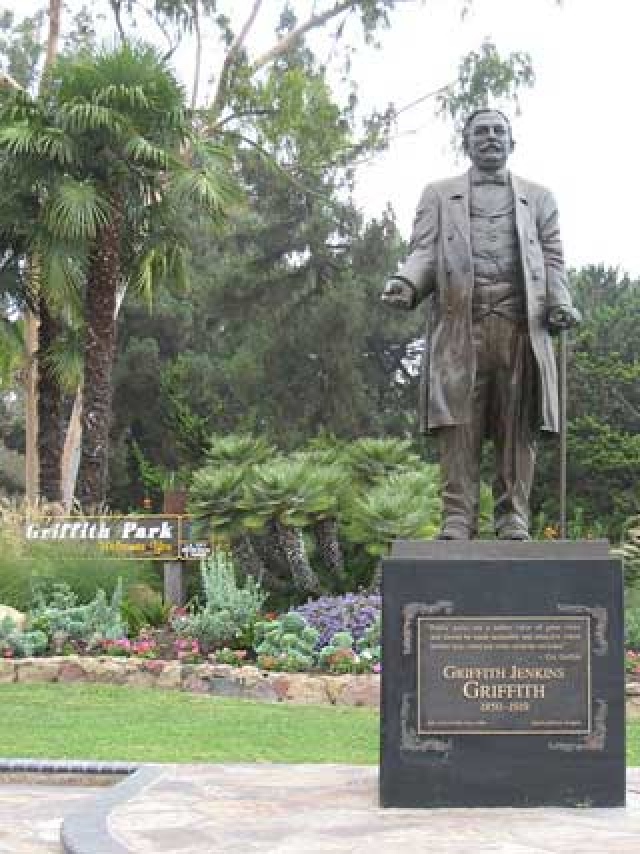Table of ContentsThe Of History Of Griffith ParkA Biased View of Griffith ParkHistory Of Griffith Park – The Facts
On January 27, 2009, the Los Angeles’ City board unanimously voted in assistance of designating Griffith Park in its whole as HCM # 942, embracing recommendation of the City’s Planning and Land Use Management Committee (PLUM) and Cultural Heritage Commission. To ease concerns over how to handle the park’s huge array of historic resources, the city’s Office of Historic Resources is dealing with the Department of Recreation and Parks to establish an upkeep strategy that determines all elements to be protected under the HCM designation.
local park in the Los Feliz area of Los Angeles, California Griffith Park, Show map of the Los Angeles city, Program map of the United States, Type, AreaLos Feliz, Los Angeles, CaliforniaCollaborates: Area4,310 acres (1,740 ha) Created1896Operated by, Los Angeles Department of Leisure & Parks, Visitors10 million, Status, Open all year, Parking, Designated, January 27, 2009Reference no. 942 Griffith Park is a big community park at the eastern end of the Santa Monica Mountains, in the Los Feliz neighborhood of Los Angeles, California. The park covers 4,310 acres (1,740 ha) of land, making it one of the biggest metropolitan parks in The United States and Canada.
The park features a number of popular tourist attractions such as the Los Angeles Zoo, the Autry Museum of the American West, the Griffith Observatory, and the Hollywood Sign. Due to its existence in lots of movies, the park is among the most popular community parks in North America. It has been compared to Central Park in New York City and Golden Gate Park in San Francisco, 2 other significant American community parks, but it is much bigger, more untamed, and rugged than either park. After successfully investing in mining, Griffith J. Griffith purchased Rancho Los Feliz (near the Los Angeles River) in 1882 and began an ostrich farm there.
A Biased View of Hotels Near Griffith Park



After the property rush peaked, Griffith donated 3,015 acres (1,220 ha) to the city of Los Angeles on December 16, 1896. Griffith was attempted and founded guilty of shooting and seriously wounding his partner in a 1903 event. When launched from prison, he attempted to fund the building and construction of an amphitheater, observatory, planetarium, and a girls’ camp and boys’ camp in the park. As his reputation in the city was polluted by his criminal offense, the city declined his cash. Los Angeles River at Griffith Park, c. 1898-1910 In 1912, Griffith designated 100 acres (40 ha) of the park, at its northeast corner along the Los Angeles River, be used to “do something to additional aviation”.

Air travel pioneers such as Glenn L. Martin and Silas Christoffersen utilized it, and the aerodrome passed to the National Guard Air Service. Air operations continued on a 2,000-foot (600 m)- long runway till 1939, when it was closed, partially due to threat from interference with the methods to Grand Central Airport across the river in Glendale, and since the City Planning commission grumbled that a military airport breached the terms of Griffith’s deed. The National Guard squadron relocated to Van Nuys, and the Aerodrome was destroyed, though the rotating beacon and its tower remained for several years. From 1946 till the mid-1950s, Rodger Young Village inhabited the location which had actually previously been the Aerodrome.



1920 Griffith set up a trust fund for the enhancements he imagined, and after his death in 1919 the city started to build what Griffith had actually desired. The amphitheater, called the Greek Theatre, was finished in 1930, and Griffith Observatory was completed in 1935. Subsequent to Griffith’s initial gift further contributions of land, city purchases, and the reversion of land from personal to public have expanded the Park to its present size. In December, 1944 the Sherman Business contributed 444 acres of Hollywoodland open space to Griffith Park. This big, passive, eco-sensitive residential or commercial property borders the Lake Hollywood reservoir (west), the previous Hollywoodland sign (north), and Bronson Canyon (east) where it connects into the initial Griffith contribution.
Getting The Griffith Park To Work

After the battle of Pearl Harbor, the Civilian Conservation Corps camp consisted of within Griffith Park was converted to a holding center for Japanese Americans jailed as “enemy aliens” prior to they were moved to more long-term internment camps. The Griffith Park Detention Camp opened practically right away after the Pearl Harbor attack, taking in 35 Japanese immigrants presumed of fifth column activity due to the fact that they lived and worked near military installations. These males, mainly anglers from neighboring Terminal Island, were transferred to an Immigration and Naturalization Service detention station after a quick stay, however Issei internees jailed in the days and weeks following the break out of the war showed up not long after to take their place.
